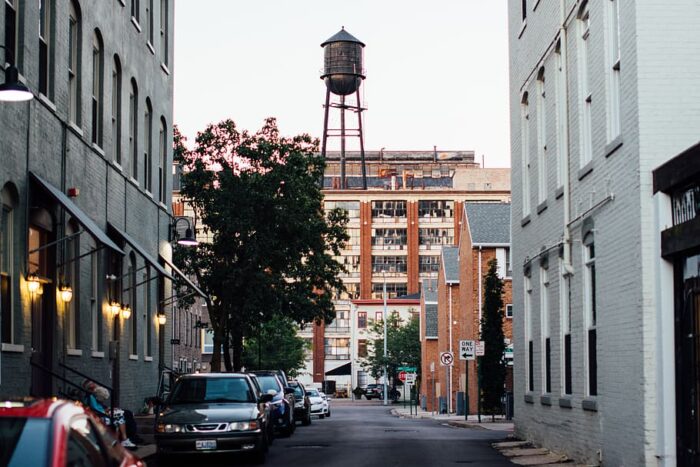Are you tired of spending most of your paycheck on rent? You’re not alone. Housing costs have skyrocketed across America, making it harder than ever to find affordable places to call home. The most inexpensive cities to live in the US might be your ticket to financial freedom and a better quality of life.
Recent studies show that housing costs now eat up more than 30% of most Americans’ income. In some major cities, that number jumps to 50% or higher. But here’s the good news: there are still plenty of budget-friendly cities where your dollar stretches much further.
We’ve done the research to bring you 12 amazing cities that won’t break your budget. These aren’t just cheap places to live – they’re vibrant communities with job opportunities, great amenities, and everything you need for a happy life. Let’s explore these hidden gems together.
Table of Contents
What Makes a City Affordable?
Before we dive into our list of the most inexpensive cities to live in the US, let’s talk about what makes a place truly affordable. It’s not just about low rent – though that’s certainly important.
Housing costs are the biggest factor. This includes both rent and home prices if you’re looking to buy. Cities on our list typically have median home prices well below the national average and rental costs that won’t eat up your entire paycheck.
Utilities and transportation also play a huge role in your monthly budget. Some cities have lower electricity costs, cheaper gas prices, or better public transportation systems that can save you hundreds each month.
Food and grocery prices vary quite a bit from city to city. What costs $100 at the grocery store in one place might only cost $70 in another. These savings add up quickly over time.
Healthcare costs are another big consideration, especially if you have ongoing medical needs. Some areas have lower insurance premiums and more affordable medical care.
Finally, state and local taxes can make a huge difference in your take-home pay. Some states have no income tax at all, while others offer lower property tax rates.
Our Selection Methodology
We didn’t just pick these cities randomly. Our team looked at data from trusted sources like the Bureau of Labor Statistics, Census Bureau, and real estate databases to find the most accurate information.
Population size was important too. We focused on cities with enough people to offer good job opportunities and amenities, but not so big that costs spiral out of control.
Quality of life factors played a big role in our selection. We looked for cities with decent schools, healthcare facilities, recreational opportunities, and cultural attractions. After all, saving money doesn’t mean much if you’re miserable.
Employment opportunities were crucial. Each city on our list has a diverse job market with opportunities in different industries. We also considered unemployment rates and average salaries.
The 12 Most Inexpensive Cities to Live in the US
1. Toledo, Ohio

Toledo offers some of the lowest housing costs you’ll find anywhere. The median home price sits around $85,000, and you can rent a nice apartment for under $700 per month. That’s about 60% less than the national average.
The city has a cost of living index of just 79, meaning everything costs about 21% less than the national average. Utilities are particularly affordable, with electric bills averaging $30-40 less per month than most places.
Toledo sits right on Lake Erie, offering beautiful waterfront views and recreational opportunities. The Toledo Museum of Art is world-renowned, and the city has a growing food scene downtown.
The job market centers around healthcare, manufacturing, and logistics. Major employers include ProMedica Health System and Owens Corning. The unemployment rate stays consistently below the national average.
2. Fort Wayne, Indiana

Fort Wayne combines affordability with Midwest charm. Housing costs are incredibly low, with median home prices around $95,000 and average rent under $750 per month.
The overall cost of living index is 82, making everyday expenses very manageable. Groceries cost about 15% less than the national average, and gas prices tend to be lower too.
This city offers excellent parks and recreational facilities, including the Fort Wayne Children’s Zoo. The downtown area has been revitalized with new restaurants, breweries, and entertainment venues.
Fort Wayne has a diverse economy with opportunities in manufacturing, healthcare, and technology. Major employers include Parkview Health and General Motors. The city also has a growing startup scene.
3. Wichita, Kansas

Wichita offers big-city amenities at small-town prices. The median home price hovers around $110,000, and rental costs average just $650 per month for a quality apartment.
With a cost of living index of 85, your money goes much further here. Food costs are particularly low, with restaurant meals costing 20-25% less than in major metropolitan areas.
The city boasts excellent museums, including the Wichita Art Museum, and has a thriving arts district. Old Town Wichita offers great nightlife and entertainment options.
Known as the “Air Capital of the World,” Wichita has strong ties to the aviation industry. Spirit AeroSystems and Textron Aviation provide thousands of jobs. The healthcare and education sectors also offer good opportunities.
4. Memphis, Tennessee

Memphis delivers southern charm with serious savings. Housing costs are very reasonable, with median home prices around $120,000 and average rent under $900 per month.
The cost of living index sits at 88, and Tennessee has no state income tax, which means more money in your pocket. Utilities and transportation costs are also below average.
Memphis is famous for its music scene, from Beale Street to Graceland. The city offers incredible barbecue, rich history, and a vibrant cultural landscape.
The job market is strong in logistics, healthcare, and manufacturing. FedEx headquarters here, providing numerous career opportunities. The medical district also employs thousands in healthcare-related jobs.
5. Buffalo, New York

Don’t let the New York address fool you – Buffalo is surprisingly affordable. Housing costs average around $140,000 for homes and $800 for rent, much lower than other New York cities.
The cost of living index is 91, and while New York has higher taxes, the lower housing costs often make up for it. Utilities can be higher in winter due to heating costs.
Buffalo offers world-class museums, beautiful architecture, and is just minutes from Niagara Falls. The food scene is incredible, with famous wings and a growing craft beer culture.
The job market has diversified beyond manufacturing to include healthcare, education, and technology. The Buffalo Niagara Medical Campus is a major employer, and the city is attracting tech companies.
6. Cleveland, Ohio

Cleveland offers excellent value for urban living. The median home price is around $95,000, and you can find great apartments for $750-850 per month.
With a cost of living index of 86, most expenses are below the national average. The city has invested heavily in public transportation, which can save you money on car expenses.
Cleveland boasts world-class healthcare at the Cleveland Clinic, excellent museums, and a revitalized downtown area. The city’s location on Lake Erie provides beautiful lakefront activities.
The job market is strong in healthcare, manufacturing, and financial services. The Cleveland Clinic and University Hospitals are major employers. The city is also growing its tech sector.
7. Oklahoma City, Oklahoma

Oklahoma City combines affordability with opportunity. Housing costs are very low, with median home prices around $125,000 and average rent under $750 per month.
The cost of living index is 89, and Oklahoma has relatively low taxes. Energy costs are particularly affordable since Oklahoma produces oil and natural gas.
The city has invested billions in downtown revitalization, creating a vibrant urban core. The Oklahoma City Thunder brings major league sports, and the city has excellent museums and parks.
The economy is diverse, with opportunities in energy, aerospace, and government. Tinker Air Force Base is a major employer, and the energy sector provides many high-paying jobs.
8. Birmingham, Alabama

Birmingham offers southern living at bargain prices. The median home price sits around $105,000, and rental costs average just $700 per month.
With a cost of living index of 85, your money stretches far here. Alabama has low taxes, and everyday expenses like groceries and dining out cost significantly less than the national average.
The city has a rich civil rights history, excellent museums, and a growing food scene. Birmingham’s medical district is nationally recognized, and the city offers great outdoor recreation.
Healthcare and education drive much of the job market. The University of Alabama at Birmingham is a major employer, and the city has numerous hospitals and medical research facilities.
9. Tulsa, Oklahoma

Tulsa delivers excellent quality of life at affordable prices. Housing costs are very reasonable, with median home prices around $115,000 and rent averaging $650 per month.
The cost of living index is 87, making most expenses quite manageable. Like Oklahoma City, energy costs are low due to local oil and gas production.
Tulsa has a beautiful downtown area, excellent museums, and a thriving arts scene. The city is known for its Art Deco architecture and has invested heavily in parks and recreational facilities.
The job market is strong in energy, aerospace, and healthcare. American Airlines has a major maintenance facility here, and Saint Francis Health System is a large employer.
10. El Paso, Texas

El Paso offers southwestern charm with serious savings. The median home price is around $135,000, and rental costs average $750 per month.
With a cost of living index of 91, most expenses are below average. Texas has no state income tax, which helps offset slightly higher property taxes.
The city offers beautiful desert landscapes, rich Mexican-American culture, and excellent Tex-Mex cuisine. El Paso is also very safe compared to other cities its size.
The job market benefits from the city’s location on the Mexican border. Healthcare, education, and government are major employers. Fort Bliss also provides many civilian job opportunities.
11. Dayton, Ohio

Dayton combines affordability with innovation. Housing costs are very low, with median home prices around $80,000 and average rent under $650 per month.
The cost of living index is just 81, making it one of the most affordable places to live. Utilities and transportation costs are particularly low.
The city has a rich aviation history and offers excellent museums and parks. Downtown Dayton has been revitalized with new restaurants, breweries, and entertainment venues.
Wright-Patterson Air Force Base is a major employer, along with healthcare systems like Premier Health. The city is also home to several major corporations and growing tech companies.
12. Little Rock, Arkansas

Little Rock rounds out our list with southern hospitality and low costs. The median home price is around $125,000, and rental costs average $700 per month.
With a cost of living index of 88, your money goes far here. Arkansas has relatively low taxes, and everyday expenses are quite reasonable.
The city offers beautiful parks along the Arkansas River, excellent museums, and a growing food scene. Little Rock also has good schools and healthcare facilities.
The job market is diverse, with opportunities in government, healthcare, and transportation. The state government provides many jobs, and the University of Arkansas for Medical Sciences is a major employer.
Tips for Moving to an Affordable City
Ready to make the move to one of these most inexpensive cities to live in the US? Here are some key tips to make your transition smooth and successful.
Research the local job market thoroughly before you relocate. Even if a city is affordable, you need income to support yourself. Look at job postings, salary ranges, and major employers in your field.
Consider remote work opportunities if possible. Many jobs can now be done from anywhere, which means you could keep your current salary while enjoying much lower living costs.
Factor in all moving costs and create a realistic timeline. Moving expenses can add up quickly, so budget for everything from hiring movers to utility deposits.
Visit your potential new city before committing. Spend a few days exploring different neighborhoods, checking out amenities, and getting a feel for the local culture.
Hidden Costs to Consider
While these cities offer great value, don’t forget about hidden costs that might affect your budget. State income tax implications can be significant – some states have no income tax, while others might surprise you with high rates.
Property tax variations can affect both renters and homeowners. Higher property taxes often mean higher rents, even if housing costs seem low initially.
Insurance rates can vary dramatically between cities and states. Car insurance, health insurance, and homeowner’s insurance costs should all factor into your decision.
Consider commuting and transportation needs carefully. Some cities have excellent public transportation, while others require a car for getting around.
Quality of Life Factors
The most inexpensive cities to live in the US offer more than just low costs – they provide excellent quality of life too. Climate and weather patterns vary widely, so consider what you prefer. Some people love four seasons, while others prefer year-round warmth.
Educational opportunities matter whether you have children or want to continue learning yourself. Many of these cities have excellent schools and universities.
Healthcare system quality is crucial, especially as you age. Look for cities with good hospitals and healthcare networks.
Cultural and recreational activities help make life enjoyable. Most cities on our list offer museums, parks, restaurants, and entertainment options.
Frequently Asked Questions
What salary do you need to live comfortably in these cities?
Generally, you can live comfortably on $35,000-45,000 per year in most of these cities. This assumes you follow the 30% rule for housing costs and budget wisely for other expenses.
Are these cities safe for families?
Yes, most of these cities have safe neighborhoods perfect for families. Like any city, some areas are safer than others, so research specific neighborhoods before choosing where to live.
How do these cities compare for retirees?
Many of these cities are excellent for retirees due to low living costs, good healthcare, and senior-friendly amenities. States without income tax are particularly attractive for those on fixed incomes.
What about internet and technology infrastructure?
All cities on our list have reliable internet service, though speeds and prices may vary. Most have multiple internet providers, giving you options for finding the best deal.
Conclusion
These 12 most inexpensive cities to live in the US prove that you don’t have to sacrifice quality of life for affordability. From Toledo’s lakefront charm to El Paso’s southwestern culture, each city offers unique benefits at budget-friendly prices.
Remember that the best city for you depends on your specific needs, career goals, and lifestyle preferences. Take time to research each option thoroughly and visit your top choices if possible.
Ready to start your journey toward more affordable living? Begin by researching job opportunities in your field in these cities. Check out housing options online, and start planning your visit to your top contenders. Your wallet – and your future self – will thank you for making the move to one of these amazing affordable cities.
